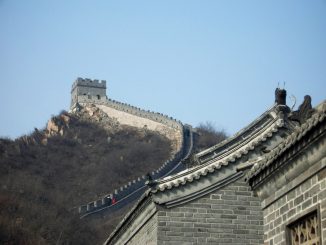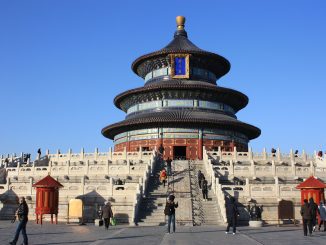
The Dragon’s Backbone (Longji Terraced Rice Fields) has got to be the best possible name to describe what is essentially a complicated group of terraced rice farms. Construction of the terraces began during the Yuan Dynasty (1271-1368), and continued for roughly 400 years, only being completed in the early Qing Dynasty (1644-1911). When the terraces were completed and flooded with water, the growing flat fields of green resemble the scales of a dragon layered out across the rolling terrain of the mountains. For the Zhuang people, the Dragon’s Backbone Rice Terraces stand as marriage of their labor and wisdom.
The linked together rice terraces change throughout the year and differ greatly from season to season. In spring, when the water is irrigated into the fields and the terraces look like giant rippling ribbons draped over the hills. As summer begins and the temperatures rise rustling green waves seem to flow continuously down the mountainside. With the autumn comes the harvest and the mountainside turns a bright yellow verging on gold. The winter snow blankets the fields in white and it seems as though the giant dragon is resting only to start all over again in a few months.
The terraced fields look somewhat like a topographical map from a distance, but the amazing amount of work that went into their construction and continually goes into their maintenance makes the long trip followed by a hike well worth the trip. The changing colors of the fields throughout the year make almost anytime a good time to visit but take weather into consideration.

